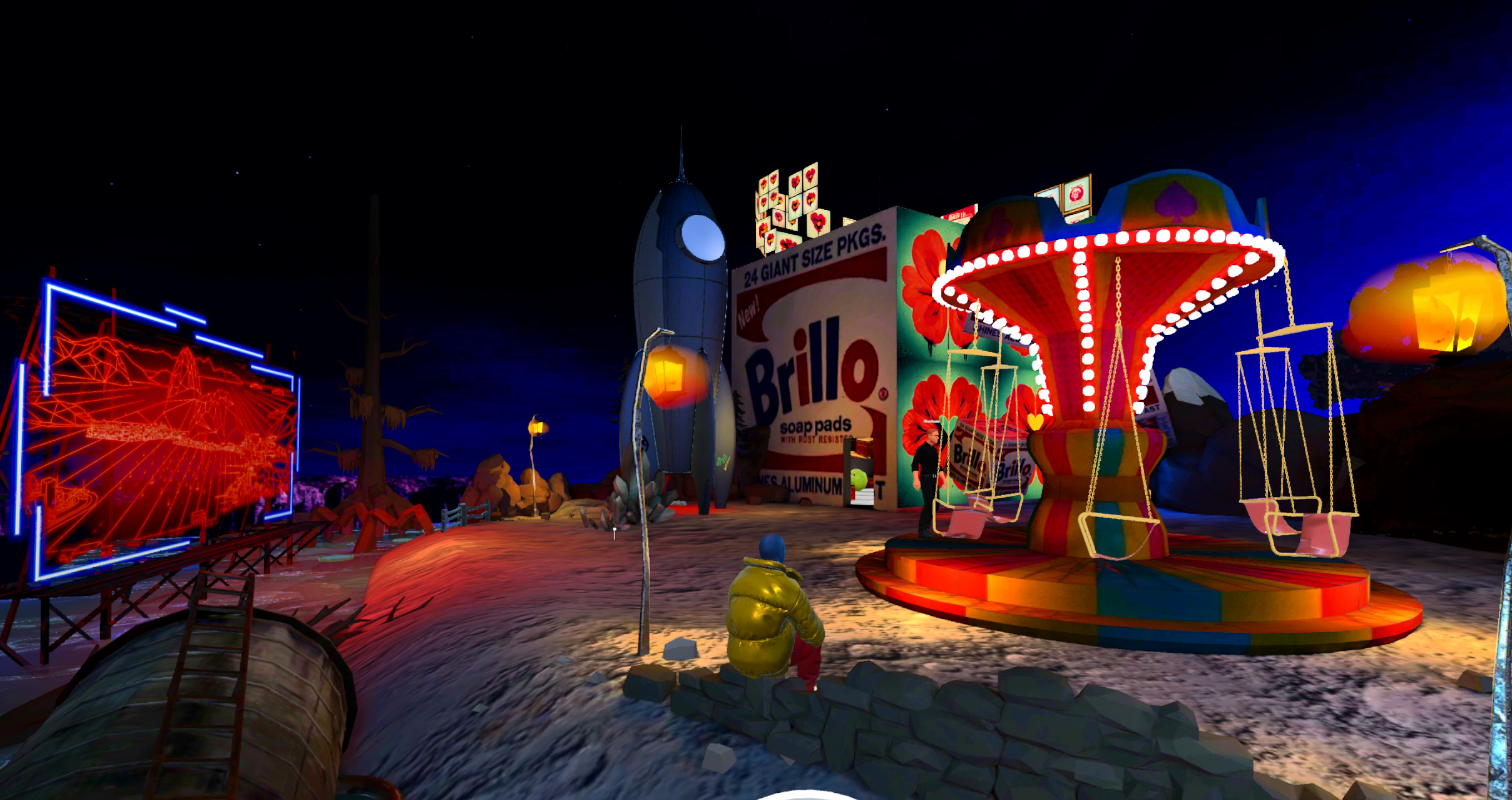VFXRio LunaPark: I want to be a machine
Exhibition - I want to be a machine - A.I. W4rhol

MANIFESTS: INDEX | ACTIVE PRESENCE | I WANT TO BE A MACHINE MULTIVISION | THE SMILE OF CHAOS

"Semiotics is in principle the discipline of studying everything which can be used in order to lie. If something cannot be used to tell a lie, conversely it cannot be used to tell the truth: it cannot in fact be used 'to tell' at all." - Umberto Eco, A Theory of Semiotics

"We all know that Art is not truth. Art is a lie that makes us realize truth, at least the truth that is given us to understand. The artist must know the manner whereby to convince others of the truthfulness of his life." -Pablo Picasso

"Fake it 'til you make it." -English aphorism

On many occasions the bell has been said to have tolled for art. The end of art was once predicted with the invention of the printing press and, more recently, with the popularization of photography. Now computers have entered the fray and some concerned souls think that the advent of art created with, or by, computers means the end for artists. In fact, computer-based art is merely a new tool that artists can use to create. And it is one that has exploded the possibility of what art can be. The catchall term for computer-created or altered content is "synthetic media."
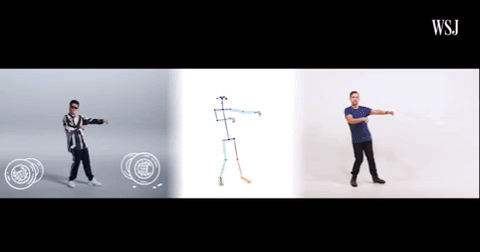
The key is that this content is made or changed in an automated way-a programmer creates and algorithm and the computer then does the work. The term covers all types of data or files, with the implication being that the final product is meant to mislead its audience into thinking that it is "real," human created. This means that it covers "fake news" and other negatives. But there is a positive side to it when it comes to art. This encompasses NFTs, metaverses, generative art and AI art.
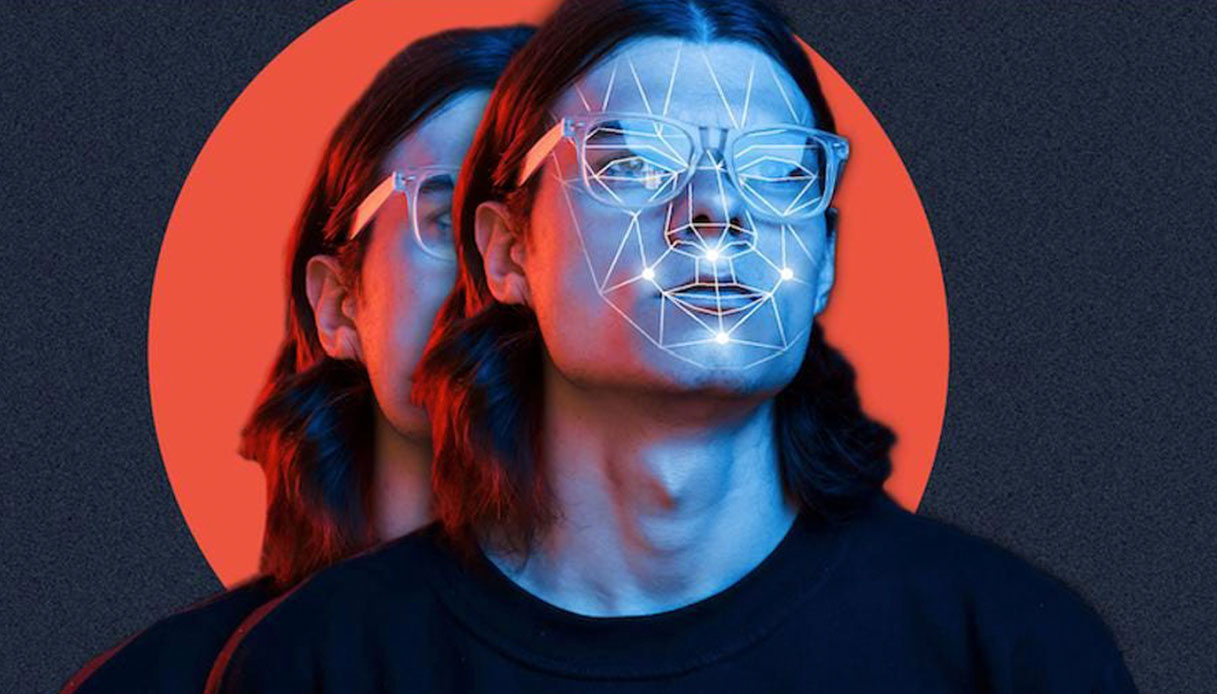
NFTs are uniquely identified computer files, the creation, rules and ownership of which are written onto a blockchain. This makes each NFT unique and tradable in a way that a random jpeg, for example, is not. An NFT image has sold for $69 million, so the market is certainly there. Metaverses are virtual worlds created by programmer artists through which participants can move using software and virtual reality (VR) goggles. Generative art is art that is created by computers, with the artist programming an algorithm rather than picking up a paintbrush. The latest addition to the positive output of synthetic media is AI art.
AI art uses computer algorithms to draw from a colossal database of categorized images to create new, unique images based on "prompts" input by the creator. The prompts are in the form of text, for instance "a snapshot of a gallery exhibition opening with a crowd wearing surgical masks gathered around a redhead from a Roy Lichtenstein Ohhh...Alright...series of paintings." The AI (artificial intelligence) program, Midjourney being one prominent example (along with Dall-e and Google's Imagen), then conjures up four images based on the prompt. This software permits an unprecedented level of photorealism and a deep level of language understanding.
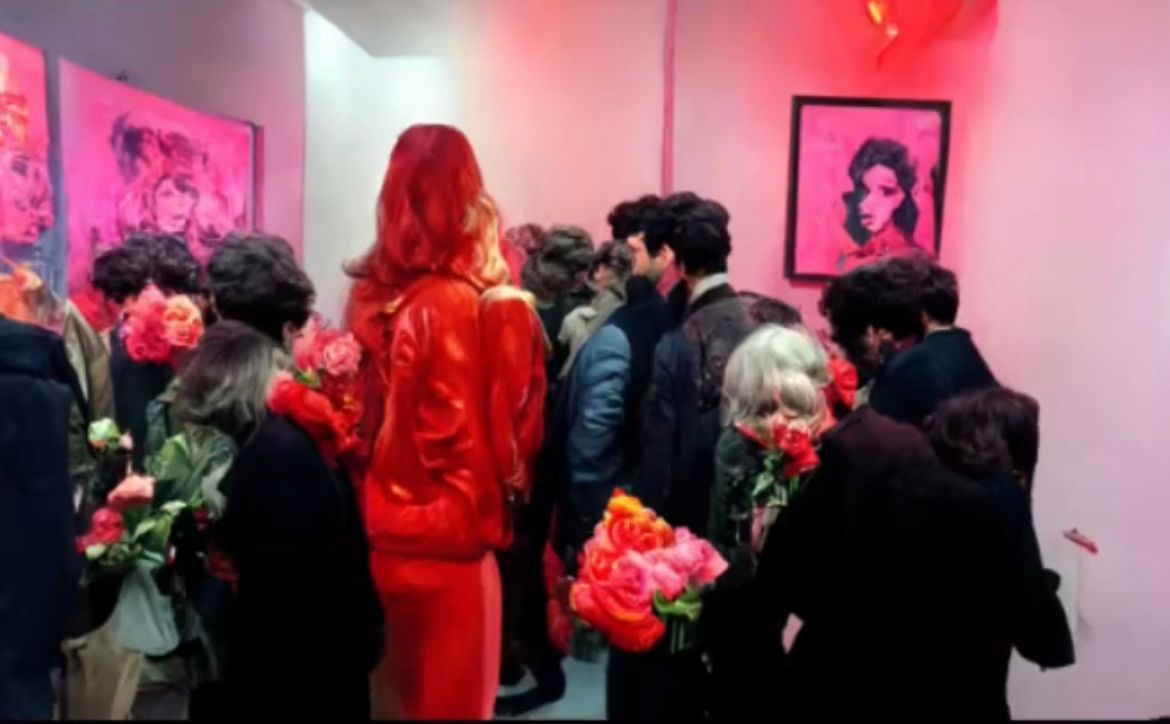
The creator can ask for a different four images, or can "upscale" one that they like, summoning up a high-resolution version of it, or they can "develop" their preferred image. Developing the image, which I call "generative evolution," allows the creator to add further prompts to one of the AI images to alter it, leading the AI to prepare a fresh batch of four images based on the initial prompt and the follow up. The AI does nothing without the input of the creator. The more development the creator requests of the AI, the more the creator-as-artist has his or her invention in the final image. An example of this is my Midjourney-generated series of flowers inspired by Andy Warhol, which I call Love Machine, part of the "I Want To Be a Machine" exhibit within the metaverse. The flower changes with each generation, the textual input prompts functioning like adding strands of DNA. What began as a simple red flower evolves over the course of hundreds of iterations as I kept adding prompts to develop it further. How it evolves is as much a surprise to the creator as to any future viewer. After enough rounds of development, the AI began to add hearts to the flower and, in what I decided should be the final image, it wrote the word "love."


The godfather of art history, 16th century painter, architect and biographer Giorgio Vasari, wrote of how artists employ invenzione (invention, imagination, visualizing an artwork before you begin to make it) and disegno (design or drawing, the actual hands-on making of the work you envisioned). When it comes to AI art, the invenzione remains with the creator, but the disegno is handed over to the computer. The creator of the image is still an artist, but instead of commanding a team of real human assistants, as do the likes of Damien Hirst and Jeff Koons, to actually make the art they envision, AI swaps out the human assistants for Artificial Intelligence. The creator still has to provide the feedback, to supervise, and the artwork is not finished until the creator determines it is. AI is just the tool, an intelligent paintbrush that works through programming rather than skill of hand to enact the will of the artist. It puts the "art" in Artificial Intelligence.

The VFXRio Lunapark is an exercise in understanding this.
In the 1980s, the New York-based graffiti artist, Fab Five Freddy, spray-painted huge Campbell's Soup cans on a train in Manhattan. This was an homage to Andy Warhol's iconic series of paintings of Campbell's Soup cans.

Warhol was once quoted as saying "I want to be a machine." I took this literally and used AI, alongside my experience with VFXRio creating established and popular virtual metaverses, to brew up a new metaverse that functions as a lunapark (a European term for an amusement park) inspired by the works of Warhol, including exhibition spaces that virtual visitors can explore. I created an avatar called A.I.W4rhol to sign my AI creations. This avatar offers me a chance to express and develop an artistic rupture through researching language and its effect on AI art. All of the art inside and the visuals in this metaverse were prepared by me, via my avatar, using the AI engine Midjourney.
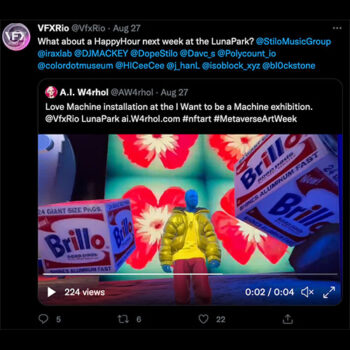
Using Midjourney for the disegno, I filled the lunapark with images developed into objects and spaces that virtual users can enter, view or interact with. One of the exhibits on display in the lunapark metaverse is the aforementioned "I Want To Be a Machine." The AI software accepted prompts of Andy Warhol's famous series of painted Brillo boxes, along with his Campbell's Soup cans, and combined them into cubes. I blew up some to enormous scale within the metaverse so that visitors can virtually walk into them or stand upon them. Atop a giant floating Brillo box is a terrace that has been dubbed Brillo Auditorium. There you can see another exhibit, "Love Machine." It consists of a series of what appear to be framed lithographs on paper of brightly colored flowers.
And, because anything the programmer chooses can be integrated into the surreal world of a metaverse, you can drive around this exhibit in bumper cars. Another exhibit, "Brillo Box Soup" (a mashup between the Campbell's Soup and Brillo Box series), is accessed via a basement inside the metaverse which has been called Plato's Cave Gallery. The metaverse will be ever-expanding, with new exhibits and spaces to explore.

After having spent so many years developing metaverses and contemplating semiotics, I believe that the most important aspect is the user experience. It must be meaningful to players, liberating, inspiring, perhaps even emotional. The term ARG, Alternative Reality Game, best categorizes this. The AI art and the metaverse space, particularly when explored wearing VR goggles, are so realistic that they trick the eye, an effect called trompe l'oeil, into thinking they are real. A lie that reveals the truth-that we can never wholly trust that what we see is real in the sense of existing in our tangible world. In the film, Inception, a character states that "an idea is like a virus, resilient, highly contagious. The smallest seed of an idea can grow. It can grow to define or destroy you." So it is with AI art. It can feel intimidating, an "end of art," but it needn't be. It is a new medium, a harness for the imagination. As the film also states, "If you're going to perform inception, you need imagination."
The Polish science fiction author Stanislaw Lem wrote a book called The Cyberiad, in which he imagined a future populated almost entirely by robots that took over the roles of humans. The book was published in 1965, decades before computers became ubiquitous, and was surprisingly visionary. One of the characters is Elektryball, an electronic poet, or robot that writes poetry, created by Trurl, a "robot wizard." Trurl is known as a "builder," because he can create anything you want, like a god. It is as if Lem has imagined not only the universal use of robots and machines in manual labor traditionally done by humans, but also the AI power of today's "electronic poets," platforms like Midjourney.
Polish science fiction author Stanislaw Lem wrote a book called The Cyberiad in which he imagined a future populated almost entirely by robots who took over the roles of humans. It was published in 1965, decades before computers became ubiquitous, it was strikingly prescient. One of the characters is Elektrybalt, an "electronic poet" or robot who writes poetry who was created by Trurl, a "wizard robot." Trurl is referred to as a "constructor" because he can create anything at will, god-like. It was as if Lem had envisioned not only the universal use of robots and machines to take over so many menial jobs traditionally done by humans, but also the AI powers of today's "electronic poets," platforms like Midjourney.

The limits in-built to current AI platforms seek to steer users away from the sort of misuse that will inevitably arrive: using AI to create fake news, sex and violence. For instance, in Midjourney you cannot include "blood" as a prompt. But such limitations can be portals of creativity. In 1939, Ernest Vincent Wright wrote a 50,000 word novel, Gadsby, without using the letter "e" within it. Inspired by it, in 1969 Georges Perec wrote La Disparition in French, likewise with "e." That novel was translated into eight languages with the translators obliged to maintain the e-less-ness. Limitations can force you to give up, or spur you on to more imaginative routes. The limits in AI prompt move the creative process to another level, as it forces you to elaborate on your ideas in alternate ways in order to develop other visuals that can achieve better results.
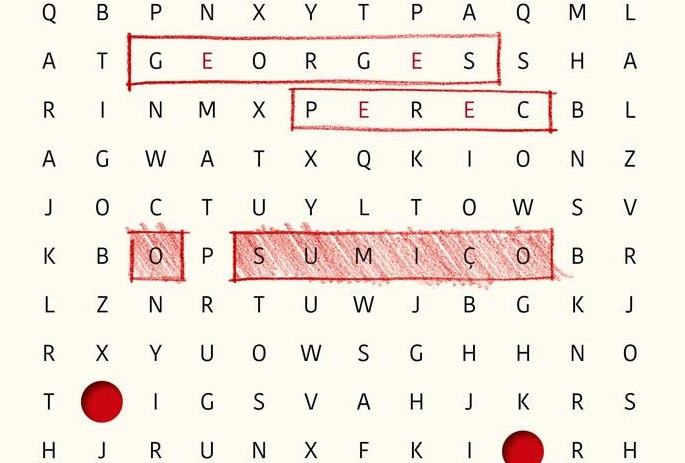
The entire experience of the VFXRio Lunapark is a case study of taking synthetic media to a new level. I have created a clustered reality that exists, albeit only virtually. Jean-Paul Sartre wrote of clustered realities, elements that enhance or reinforce one another. With this in mind, I created hypothetical newspapers showing headline that refer to "I Want To Be a Machine," unique works of art to occupy the metaverse, and a Twitter account for my avatar, A.I.W4rhol, each element of which deepens the other elements of the (virtual) reality.
Andy Warhol would certainly have approved of AI art, even when it based its creations on his own work. He once paid a friend for ideas about what art to make: she suggested that he make what he loves most: money. So he turned to creating artworks by painting or silk-screening images from capitalist marketing culture that had already been made by someone else. Objects like Campbell's Soup cans or Brillo laundry detergent boxes. He was reproducing a mass-produced industrial image by hand, in paint. I've taken the spark of Warhol and instead used AI to create entirely new images that are reminiscent of Warhol's, without exactly duplicating them, in a new medium.

Semiotics is the study of symbols and their meanings. What I created, with Midjourney's help, is a layer cake of symbols. It is conveys the original, mass produced products (soup and laundry detergent) as well as the layer of Warhol's art based upon them, and now provides a third layer, AI-created art based on art based on advertising.
Each image that you craft inside Midjourney holds a cryptographic code and the text is its key. You do not only create an image, but also an atmosphere and a notion of space and time. For example, the clustered reality elements of an old newspaper announcement of "I Want To Be a Machine," as well as what appears to be a snapshot by a photographer of a group of people at the opening of an exhibit, gathered around a redheaded woman who looks like she's stepped out of a Roy Lichtenstein painting series. The result of these AI confections is surreal and yet appears very real.
AI can create images so realistic that they would fool most viewers. There are dangers here. At the moment, there is an unofficial policy that AI not be used to reproduce images of sex and violence, but it is only a matter of time before the internet is filled with them. The realism of what AI creates means that its images can have implications on civil liberties, used to undermine public confidence in what they are seeing when it's real, for fear of believing a fraudulent image. There is serious potential for governments or individuals to manipulate the public. Rather than this being a reason to stay away from synthetic media which, now that it is here and available, is never going away and will only grow, this is why it is of critical importance to promote its study. Only through deep study and understanding will we be able to recognize, or determine, whether a future image or video (whether 2D, 3D, immersive or non-immersive) is real or not. The first question is whether it is real or AI-created, but the second must inevitably be of intentionality. If the intention is to make mischief or cause harm, then images-real or fake-are destructive. If the intention is to offer a meaningful experience, to enlighten, entertain or provoke thought, then an image or video used to do so-real or fake-is beneficial or at least non-malevolent. The limits I've mentioned are present in the key AI art platforms, but that won't stop those who want to circumvent them. And it is nearly impossible to tell, at a glance, that the images are fictional, if the AI creator includes a prompt calling for an image that looks like a photograph or a newspaper clipping. When used for entertainment, beauty and interest the technology is a wondrous playground of possibility. The "lies" or computer-spun images are all in good fun. But the possibility exists for the technology to be used to manipulate and propagate false news. At this point, viewers would find it impossible to determine if the image is "real" or AI-generated, particularly when it comes to images in a photojournalistic style. The only defense is logic-could this be real?

The AI tools process constructs a lucid dream state for its audience. Hypothetically, in the near future, this process may be able to teach machines how to dream. That, one would hope, will lead to a better version of HAL 9000, the infamous computer from 2001: A Space Odyssey designed to mimic human mistakes. What is important now, in the early days of synthetic media, is to educate the public on how to use it in a way that creates meaningful experiences, a movement for beneficent use of VR. It is so powerful since it can change our own perception.

It is not only the audience that may have to work backwards to determine whether an image is real of AI. Artists using AI will have to learn to reverse engineer what they normally do. They must define, articulate what they want and let the algorithm create it for them, rather than the traditional approach of creating an artwork and then perhaps later articulating their intention behind it for the public.
The craft of the metaverse and of the semiotics of construction must create something that feels real even if it is surreal.
One wonders what Warhol would be creating if he were alive today with access to AI...
Matteo Moriconi
_______________________________________
Digital Artist
President of the Brazilian Association
of Visual Technology - ACM Siggraph
Acknowledgements: The essay - I Want to be a Machine is the result of an ongoing exchange of ideas with VFXRio Collaborators:
Liana Brazil and Luiz Velho.


